Steak lovers rejoice! In this comprehensive guide, we will explore the world of steak cuts, delving into their unique characteristics, best cooking methods, and serving suggestions.
Whether you’re a seasoned grill master or a curious food enthusiast, understanding the different steak cuts is crucial for selecting the perfect piece of meat that suits your taste preferences.
So, let’s embark on this flavorful journey and unravel the mysteries of steak cuts.
The Basics of Steak Cuts
Before we dive into the wide variety of steak cuts, it’s essential to grasp the fundamentals.
Understanding the anatomy of a cow and how different cuts are derived from specific regions can help us appreciate the diverse range of flavors and textures found in steaks.
Anatomy of a Cow:
The key to comprehending steak cuts lies in knowing the different muscle groups in a cow. These muscles vary in tenderness and marbling due to their location and function.
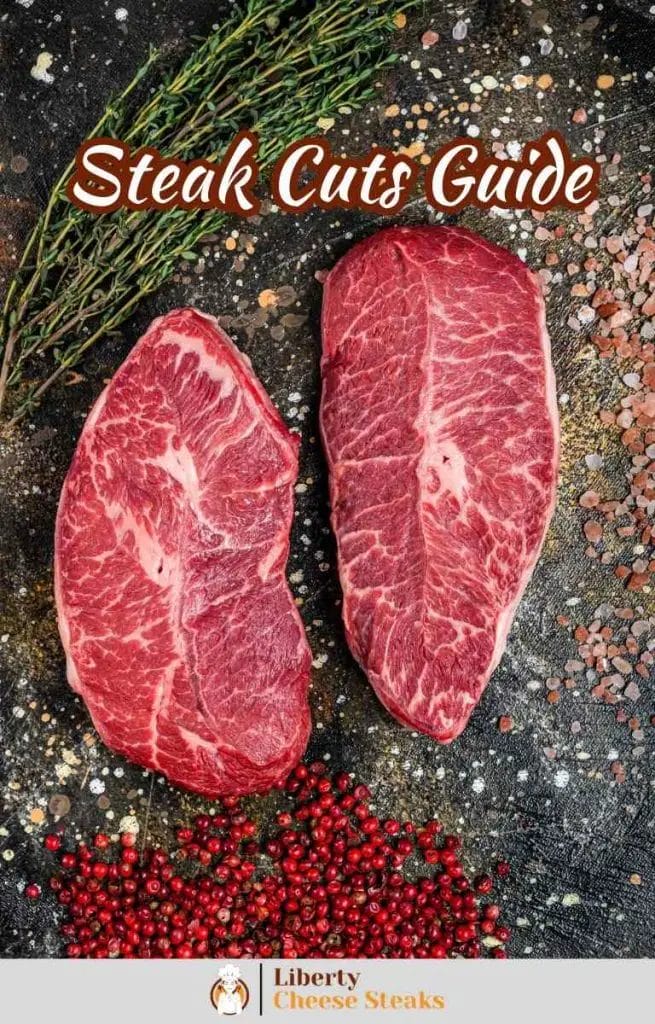
The most tender cuts come from less worked areas, while more robust and flavorful cuts are derived from muscles that work harder.
Deriving Steak Cuts:
Steaks are typically obtained from primal cuts, which are large sections of meat divided from the carcass.
Primal cuts are further broken down into sub-primal cuts, and finally, individual steaks are obtained from these sub-primal cuts.
Each sub-primal yields steaks with distinct characteristics, making them ideal for specific cooking methods.
Factors Affecting Tenderness and Flavor:
Several factors contribute to the tenderness and flavor profile of steak cuts. The level of marbling (intramuscular fat), muscle usage, age of the animal, and the presence of connective tissue all play a role.
Tender cuts with generous marbling tend to be more succulent and melt-in-your-mouth, while cuts with more connective tissue can be flavorful when cooked properly.
Popular Steak Cuts
Now, let’s explore some of the most popular steak cuts enjoyed worldwide, along with their unique characteristics, recommended cooking methods, and serving suggestions.
A. Tenderloin (Filet Mignon):
Known as the pinnacle of tenderness, the tenderloin is a lean and buttery steak cut. It is sourced from the loin region, near the spine, and exhibits minimal marbling.

Best suited for dry-heat cooking methods like grilling or pan-searing, the filet mignon is often served on special occasions or for those seeking an indulgent, melt-in-your-mouth experience.
B. Ribeye:
Recognized for its exceptional marbling and rich flavor, the ribeye is a beloved steak cut. It is derived from the rib section, close to the animal’s ribcage.
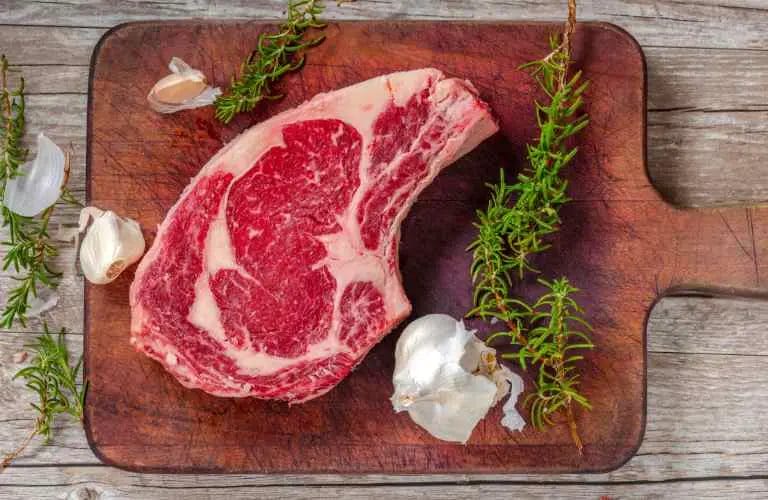
The ample fat marbling throughout the meat lends a juicy and robust taste.
Grilling or pan-searing the ribeye allows the fat to render and create a delicious caramelized crust, resulting in a succulent and flavorful steak.
C. Striploin (New York Strip):
Situated adjacent to the ribeye, the striploin is known for its excellent balance of tenderness and flavor.
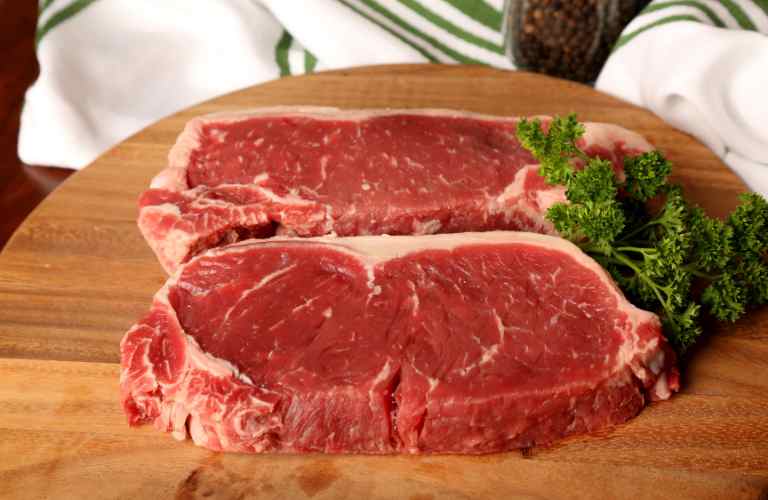
It offers a leaner profile compared to the ribeye while still showcasing marbling that enhances its taste. Ideal for grilling or pan-searing, the New York Strip is a versatile and crowd-pleasing choice.
D. T-Bone and Porterhouse:
These iconic cuts combine two steaks in one. The T-bone and Porterhouse steaks are derived from the short loin, and they feature a T-shaped bone dividing the striploin and the tenderloin.
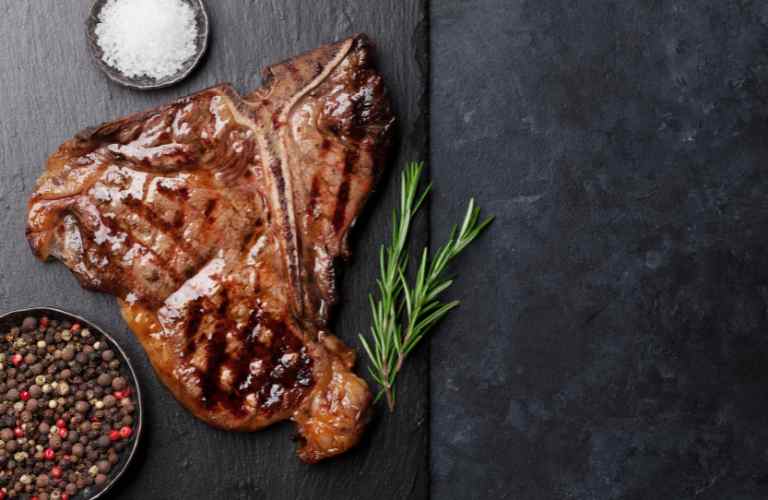
The T-bone steak offers a smaller portion of tenderloin, while the Porterhouse boasts a larger tenderloin section.
Both cuts are perfect for grilling, allowing the bone to add extra flavor and juiciness.
E. Sirloin:
Situated in the hindquarter, the sirloin encompasses several sub-primal cuts that offer a range of tenderness and flavor.
From top sirloin to tri-tip, these steaks are known for their versatility and robust beefy taste. Suitable for grilling, broiling, or pan-searing, sirloin steaks are a popular choice for everyday meals.
F. Flank and Skirt Steak:
These long, thin cuts are derived from the abdominal muscles of the cow. Although they are lean and less tender, flank and skirt steaks offer intense beefy flavors.

Marinating and proper cooking techniques like high-heat grilling or searing are crucial for tenderizing these cuts.
They are often sliced thinly against the grain and used in dishes like fajitas or stir-fries.
G. Chuck Eye Steak:
Located in the shoulder region, the chuck eye steak is an affordable and underrated cut. It shares similarities with the ribeye, offering good marbling and flavor.

Proper cooking techniques, such as slow cooking or braising, can transform this economical cut into a tender and flavorful delight.
H. Flat Iron Steak:
Also known as a top blade steak, the flat iron is gaining popularity for its tenderness and rich flavor. It is derived from the shoulder and exhibits a prominent connective tissue line that should be removed before cooking.
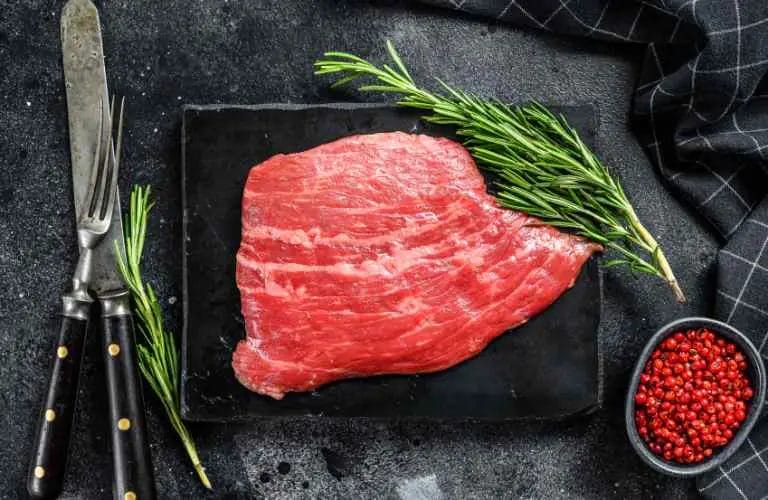
Best prepared using dry-heat methods like grilling or broiling, the flat iron steak offers a budget-friendly alternative without compromising on taste.
I. Hanger Steak:
This cut is obtained from the diaphragm muscle and is highly regarded for its robust beefy flavor.

While it may be slightly chewier than other premium cuts, proper marinating and cooking techniques can unlock its tender potential. Grilling or pan-searing are recommended methods for this unique and flavorful steak.
J. Other Lesser-known Steak Cuts:
Apart from the well-known cuts, there are numerous other intriguing steak options worth exploring.

These include the tri-tip, culotte steak, petite tender, and more. Each of these cuts possesses distinct characteristics, and their best cooking methods and serving suggestions can elevate your culinary repertoire.
Factors to Consider When Choosing Steak Cuts
When selecting a steak cut, several factors come into play to ensure a satisfying dining experience. Consider the following aspects:
Personal Preferences:
Tenderness, flavor, and marbling are subjective preferences. Some individuals prefer tender cuts with minimal marbling, while others enjoy the rich flavor that comes with ample marbling.
Understanding your taste preferences will guide you in choosing the ideal steak cut.
Cooking Methods and Doneness:
Different steak cuts lend themselves to specific cooking techniques and levels of doneness.
For example, tender cuts like filet mignon are well-suited for quick-cooking methods such as grilling or pan-searing, whereas tougher cuts like flank steak benefit from marinating and longer cooking times.
Consider how you prefer your steak cooked and choose a cut that complements your desired doneness.
Budget Considerations:
Steak cuts vary in price, with premium cuts often commanding a higher price tag. It’s essential to consider your budget when selecting a steak cut.
However, keep in mind that there are delicious and more affordable options available, such as chuck eye steak or flat iron steak, which still offer great flavor and tenderness.
Steak Cuts from Around the World
Steak lovers around the globe have discovered unique cuts that are specific to their regions. Let’s explore some renowned international steak cuts:
Japanese Wagyu:
Renowned for its exceptional quality and unparalleled marbling, Japanese Wagyu is a delicacy that has gained worldwide acclaim.
This highly prized beef comes from specific cattle breeds, such as Kobe and Matsusaka, raised in Japan.
Wagyu steaks are known for their intense marbling, resulting in unmatched tenderness, richness, and a melt-in-your-mouth texture. Due to their high fat content, Wagyu steaks are best enjoyed when lightly seared or grilled to preserve the intricate flavors.
Argentinean Beef:
Argentina is famous for its beef, and one of the most cherished cuts is the Argentinean-style steak. Derived from grass-fed cattle, Argentinean steaks, such as the entraña (skirt steak) and bife de chorizo (strip steak), offer robust flavors and a slightly chewy texture.
These steaks are often seasoned with salt and grilled over open flames, allowing the meat’s natural flavors to shine.
Australian Beef:
Australia is known for producing high-quality beef, including a range of unique steak cuts. From the richly marbled ribeye to the flavorsome sirloin, Australian beef offers a diverse selection for steak enthusiasts.
Grass-fed and grain-fed options provide distinct flavor profiles, allowing for versatility in cooking methods and preparations.
Other Notable Regional Steak Cuts:
Different countries and cultures boast their own signature steak cuts. For instance, Brazil is famous for its picanha, a tender and flavorful cut sourced from the top sirloin. In France, the entrecôte, a ribeye steak, is a classic favorite.
The Scotch fillet, derived from Scotland’s Highland cattle, is renowned for its exceptional tenderness and flavor. Exploring these regional specialties opens up a world of unique steak experiences.
Tips for Cooking and Serving Steak
To ensure your steak is cooked to perfection and beautifully presented, consider the following tips:
Proper Seasoning and Marinating Techniques:
Enhance the flavors of your steak by seasoning it with salt and pepper or using dry rubs. For tougher cuts, marinating can help tenderize the meat and infuse additional flavors.
Experiment with different herbs, spices, and marinades to elevate the taste profile of your steak.
Grilling, Pan-searing, and Sous Vide Methods:
Grilling over high heat creates a delicious crust while maintaining the steak’s juiciness. Pan-searing is ideal for thicker cuts and allows for precise control over the cooking process.
Sous vide, a method of cooking steak in a water bath at a precise temperature, ensures consistent results. Finish the steak with a quick sear for a caramelized exterior.
Resting and Slicing Steak:
After cooking, allow your steak to rest for a few minutes before slicing. Resting helps retain the juices and ensures a tender and juicy steak.
When slicing, cut against the grain to maximize tenderness and make each bite more enjoyable.
Suggested Side Dishes and Sauces:
Accompany your steak with complementary side dishes and sauces. Classic pairings include roasted potatoes, sautéed vegetables, or a crisp salad. For sauces, consider options like peppercorn sauce, chimichurri, or red wine reduction to enhance the flavors of your steak.
Conclusion
Understanding the wide array of steak cuts available allows you to make informed decisions when selecting the perfect steak for your culinary endeavors.
Whether you prefer tender, melt-in-your-mouth cuts like filet mignon or flavorful, marbled steaks like ribeye, exploring the diverse world of steak cuts promises a delightful gastronomic adventure.
Remember to consider factors like personal preferences, cooking methods, and budget when choosing a steak cut. Experiment with international steak cuts, such as Japanese Wagyu or Argentinean-style steaks, to experience unique flavors from around the world.
Implementing proper cooking techniques and seasoning, and pairing your steak with complementary side dishes and sauces, will elevate your dining experience to new heights.
So, grab your apron, fire up the grill, and prepare to indulge in the tantalizing world of steak cuts. Whether you’re hosting a gathering or treating yourself to a special meal, the perfect steak cut will satisfy your cravings and leave you craving more. Happy steak adventures!
Frequently Asked Questions
What is the difference between a T-bone and a Porterhouse steak?
While both T-bone and Porterhouse steaks are cut from the short loin and feature a T-shaped bone, the main distinction lies in the proportion of tenderloin included.
T-bone steaks have a smaller portion of tenderloin, while Porterhouse steaks have a larger tenderloin section.
Generally, the Porterhouse is considered the more premium cut due to the larger portion of tenderloin.
What is the best way to cook a tough cut like flank steak or skirt steak?
Tough cuts like flank steak and skirt steak benefit from marinating to enhance tenderness and flavor. After marinating, these cuts are best cooked quickly over high heat.
Grilling or high-heat pan-searing are popular methods that help to break down the muscle fibers and create a flavorful crust on the outside while maintaining a juicy interior. It is important to slice these cuts thinly against the grain for maximum tenderness.
What is the recommended level of doneness for a steak?
The level of doneness is a matter of personal preference. The most common levels of doneness are rare, medium rare, medium, medium well, and well done.
Rare steaks are cooked very briefly, resulting in a cool, red center. Medium-rare steaks have a warm, pink center with a slightly more cooked exterior.
Medium steaks have a warm, pink center with a larger cooked portion, while medium-well steaks have a slightly pink center.
Well-done steaks are cooked thoroughly, with no trace of pink. It’s important to use a meat thermometer to ensure your steak reaches the desired internal temperature for your preferred level of doneness.
What is the proper way to season a steak?
The simplest and most common way to season a steak is by generously sprinkling salt and pepper on both sides just before cooking.
This enhances the natural flavors of the meat. However, you can experiment with various dry rubs or seasoning blends to add additional flavors.
Remember to let the seasoned steak rest for a few minutes before cooking to allow the flavors to penetrate the meat.
Can I use a marinade for premium cuts like filet mignon or ribeye?
Premium cuts like filet mignon or ribeye are already flavorful and tender, so they generally don’t require marinating.
However, if you want to infuse additional flavors, you can use a simple marinade for a short period of time.
Avoid acidic marinades with high acidity levels as they can potentially affect the texture of these delicate cuts. For premium cuts, it’s often best to let the natural flavors shine through with minimal seasoning.
How long should I let my steak rest before slicing?
After cooking, it’s recommended to let your steak rest for about 5 to 10 minutes. Resting allows the juices to redistribute and settle, resulting in a more tender and juicy steak. Tent the steak loosely with foil to retain heat during the resting period.
What are some popular steak sauces that pair well with different cuts?
There are numerous delicious sauces that complement steak cuts. Here are a few popular options:
- Peppercorn Sauce: A classic choice made with cracked peppercorns, cream, and often brandy or red wine. It pairs well with tender cuts like filet mignon or ribeye.
- Chimichurri: A vibrant and tangy Argentinean sauce made with parsley, garlic, vinegar, and olive oil. It adds a fresh and herbaceous flavor to various cuts, especially flank steak.
- Béarnaise: A rich and creamy sauce made with clarified butter, egg yolks, and tarragon. It is traditionally served with tender cuts like filet mignon or ribeye.
- Red Wine Reduction: A luxurious sauce made by simmering red wine with shallots, herbs, and beef broth. It pairs well with many steak cuts, adding depth and richness to the flavors.
Are there any vegetarian or plant-based alternatives to steak cuts?
Yes, there are several vegetarian and plant-based alternatives that aim to mimic the taste and texture of steak.
These alternatives are often made from plant proteins, such as soy, peas, or wheat gluten, and can be found in various forms like seitan, tempeh, or veggie burgers.
While they may not perfectly replicate the flavor of real steak, they provide a satisfying and meat-like experience for those following vegetarian or vegan diets.

